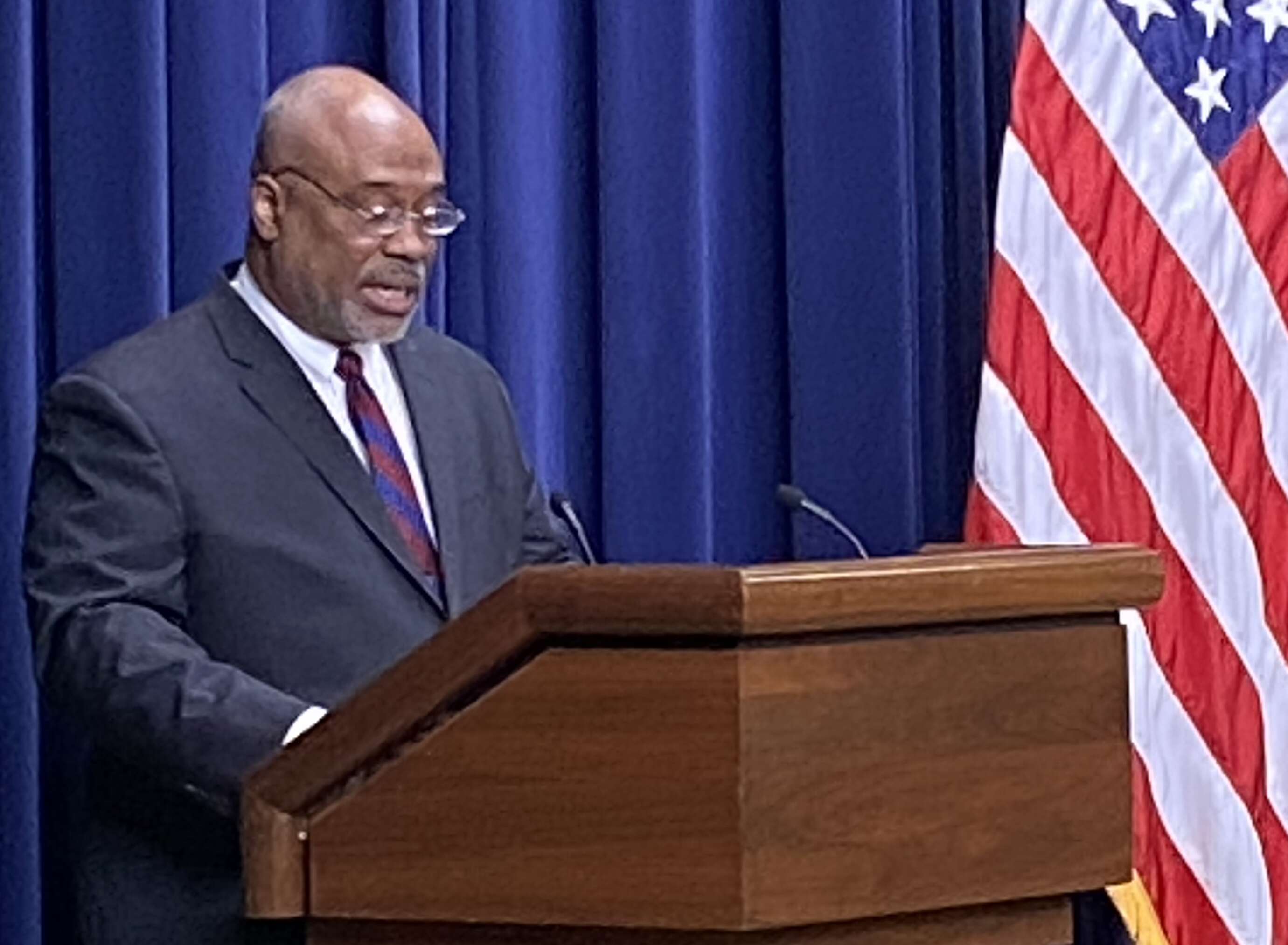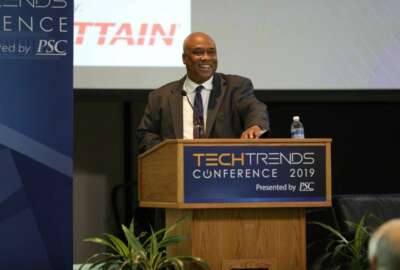

Dr. Michael Wooten, the administrator in the Office of Federal Procurement Policy, said he is preparing the workforce for a future where robotics process automa...
Best listening experience is on Chrome, Firefox or Safari. Subscribe to Federal Drive’s daily audio interviews on Apple Podcasts or PodcastOne.
Private sector experts from Amazon, Wells Fargo and American Airlines came to the White House yesterday to reveal their secrets to getting more value out of their procurement dollars.
In return, the Office of Management and Budget issued a new challenge to those companies and anyone else who is interested to bring ideas across six areas for how the government can modernize its acquisition supply chain.
Michael Wooten, the administrator in the Office of Federal Procurement Policy, said the challenge and entire supply chain modernization event is part of his goal to make federal acquisition frictionless.
“What do we do to get the cost of buying down?” Wooten said in an interview with Federal News Network. “I’ve talked often about the rules, the tools, the schools and the talent pools as the levers we have at OFPP. We need to figure out how to configure those rules, those tools and particularly those talent pools in ways that are more efficient, that help us get the acquisition system to have less friction. The tools will be key, but right behind that we have to make sure the talent pools know how to manage that.”

OMB is asking for input from public and private sector experts to help answer an assortment of questions around benchmarking, data and pricing, market research, technology, continuous improvement and training of acquisition and other workers.
“The purpose of the challenge is idea creation to catalyze new thinking in government procurement around best practices, more strategic orientation and applying what we learned from world class private sector and public sector opportunities to the federal government acquisition supply chain management capabilities,” said Margaret Weichert, the deputy director for management at OMB, at the White House Summit on Federal Acquisition and Supply Chain Management on Jan. 27 in Washington, D.C. “Even though business is using different words, they are talking about the same things we are talking about: mission, service and stewardship. They are using tools that are different, in some cases, than what are easy for us to use in government. What are those barriers for us in government to actually embracing some of the art of the possible that the private sector is so agilely responding to, and things like data, innovation, responsiveness and quality control in the process, not a linear pre-quality control that tries to anticipate every problem before it happens, which means it’s a two-three year acquisition process.”
Ideas are due to OMB by Feb. 17.
Weichert said the challenge and this broader supply chain management effort is to make the federal procurement process more agile and responsive to the needs of the agencies and citizens.
Agencies spend about $350 billion out of about $580 billion a year on common goods and services. Facilities and construction, technology hardware, software and services, professional services and medical products and services make up the vast majority of that spend.
Wooten said it’s been clear for some time that the government can no longer afford to continue to buy the same way it has over the past 50 years.
He said this is why the use of artificial intelligence and robotics process automation (RPA) is so important for agencies.



Wooten said he is looking at which agencies are testing RPA and AI tools to improve acquisition processes and wants to share those approaches across the government.
The General Services Administration, and the IRS are among the agencies using RPA to improve their acquisition processes.
OMB, more broadly, also has high expectations for RPA with Weichert calling the federal workforce a “target-rich environment” for the implementation of automation.
“What I want to talk about is workforce 2025. What will our workforce look like in 2025?” Wooten said. “By then, RPA and AI will be more commonplace, and then we need to see a workforce that is nimble and that can leverage the automation to do the mundane tasks. Workers then can shift their skills to the right and focus more on the critical thinking and the business judgement that we should be paying acquisition professionals to do.”
Wooten said automation will help contracting officers and other acquisition workers take care of those processes better, faster and more accurately than any human could.
“I think the schools of the future will help the talent pools by helping them sharpen that judgement and understand how to think through those business deals and teach them less about the step-by-step processes of acquisition,” he said. “There are so many opportunities that we have to not change the federal acquisition regulations, but change the way the workforce operates within the FAR. You have some people who are very conservative and others who are a little bit more entrepreneurial. We need to be able to shine a light on best practices.”
As part of that, Wooten said he would like to highlight work done by agency offices like the Procurement Innovation Lab (PIL) at the Homeland Security Department or the Navy or Air Force with their innovation labs.
Additionally, OFPP is preparing new mythbuster memos to continue to promote acquisition innovations and build on the one released in May.
Wooten said another important part of this effort to improve the acquisition process is how agencies collect and use data to make better decisions. He said as agencies get deeper into the use of category management practices, the more the data will help and matter.
Still, Wooten understands there is a need to move fast in 2020.
“A prudent man always looks at the runway he has. That gives me a sense of urgency and I’m actually energized by using that sense of urgency by asking myself ‘what can I get done this year?’” he said. “That being said, helping the workforce understand this excellent office I work in, OFPP, a lot of people don’t know what it is and that’s why I’ve started to talk about the levers that we use to touch the rules, the tools, the schools and the talent pools. Beyond that, what I really want to do strategically is get us to focus on and commit to getting the cost of the buying function down and getting the buying function to operate with less friction. Those two things will be the hallmark of anything that I do that is meaningful.”
Copyright © 2024 Federal News Network. All rights reserved. This website is not intended for users located within the European Economic Area.
Jason Miller is executive editor of Federal News Network and directs news coverage on the people, policy and programs of the federal government.
Follow @jmillerWFED
